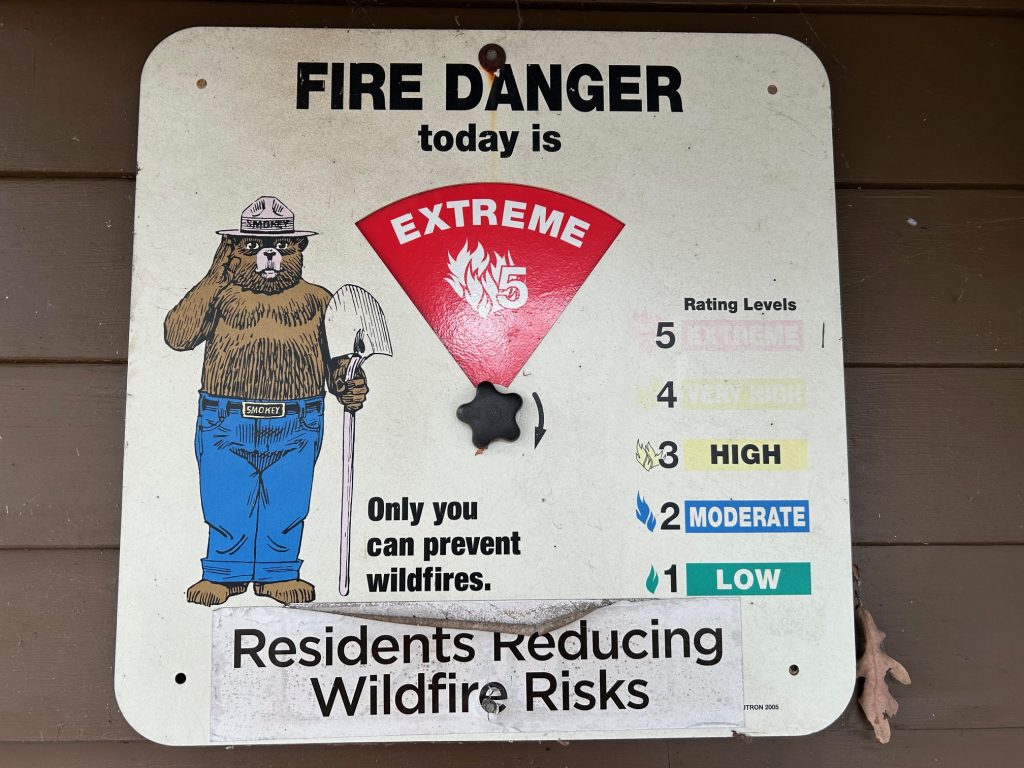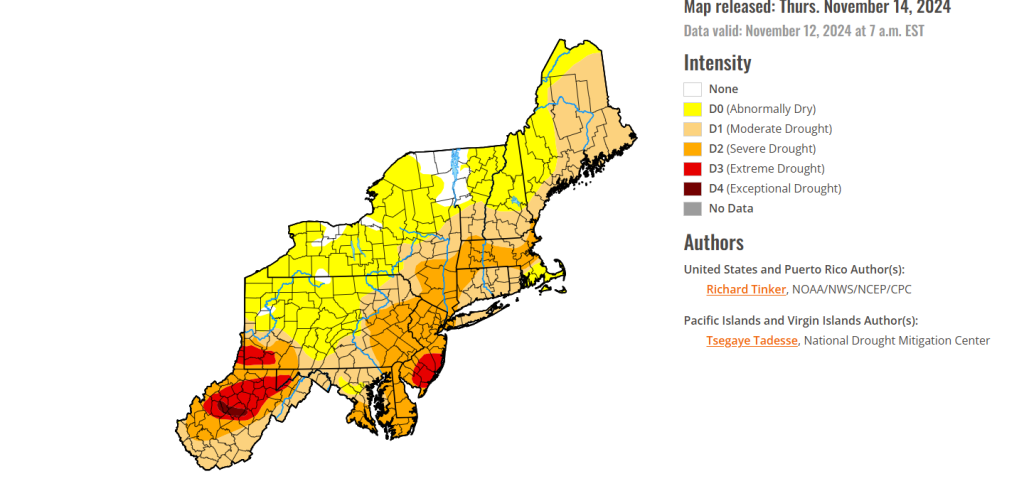
Rain and snow coming but not nearly enough to end Delaware River watershed drought
| November 19, 2024
Though welcome rain and snow is in the forecast for the parched Delaware River basin, it will make only a tiny dent in the drought conditions that have persisted in the four-state watershed.
The entire region is dealing with the driest two-month period on record (September-October), according to Ben Gelber, an expert on the weather in the Poconos in Pennsylvania and an Ohio television meteorologist.
He noted that Stroudsburg received only .12 inch of rain in October, tying October 1963 for the driest month in more than a century of records. Mount Pocono had .18 inch, the driest on record since 1901, he said.
“Less than three inches of rain has fallen in the past three months, a remarkable 12 inches below normal for that period in the southern Poconos,” Gelber said. “Philadelphia had only a trace of rain in October, and New York City .01 inch, the driest month in records that extending back to the late 1800s.”
Storm brewing
He said a storm system over the Great Lakes and an intrusion of arctic air will spawn a storm near the New Jersey coast on Thursday morning, which will curl northwestward across southern New York and last into the weekend.
“This very unusual storm track will contribute to significant precipitation totals from the Lehigh Valley northward to the Catskills totaling upwards of an inch,” he said, adding that Upper Delaware River basin will likely record amounts as high as 1.5 to two inches.
“This will make an important dent” in the drought conditions, he said, but cautioned that several months of normal to above-normal precipitation would be required to restore reservoir levels to where they should be.
The storm system will bring the first measurable snow of the season to the Poconos and higher elevations of northwestern New Jersey early in the weekend, he said. Expect one to three inches of accumulation over higher terrain in the watershed, and four to eight inches of wet snow in the Catskills through Saturday.

How bad are the drought conditions?
- A U.S. Drought Monitor map posted on Nov. 14 by the National Drought Mitigation Center at the University of Nebraska-Lincoln, the National Oceanic and Atmospheric Administration and the U.S. Department of Agriculture shows much of the watershed in a state of “severe drought” and some pockets in southern New Jersey in an “extreme drought.” The highest level is “exceptional drought.” The map is updated every Thursday.
- In Pennsylvania, two counties in the watershed — Schulykill and Berks — were under drought warnings as of Tuesday. The remaining counties in the watershed were under drought watches, according to the Pennsylvania Department of Environmental Protection. A drought emergency is the most severe of the levels.
- In New York, the State Department of Environmental Conservation on Monday issued a heightened drought warning for much of the Catskills, Hudson Valley and New York City. The rest of the state remains under a drought watch. A warning is the second of four levels of state drought advisories. The levels are: watch, warning, emergency and disaster.
- In New York City, the city notched its longest rainless streak in recorded history going back 155 years. Mayor Eric Adams elevated the city to a drought warning, the first time since 2002.
- In New Jersey, the state on Nov. 13 elevated its status to a drought warning, as it strongly urged the public to reduce its water consumption. A warning is the third-highest drought status, just below a drought warning. The state experienced its driest October on record, dating back to 1895, according to drought.gov.
- In Delaware, Gov. John Carney on Oct. 25 issued a statewide drought watch, which calls for voluntary conservation measures.
The dry conditions have led to an outbreak of wildfires throughout the region. In the Town of Denning in Ulster County, the Whitehouse Fire consumed more than 600 acres this month.
And in New Jersey, since the start of the year, nearly 1,300 wildfires have burned over 11,000 acres. The average number of fires per year since the year 2000 has been 1,071 wildfires, with 4,000 acres burned, the state said.







